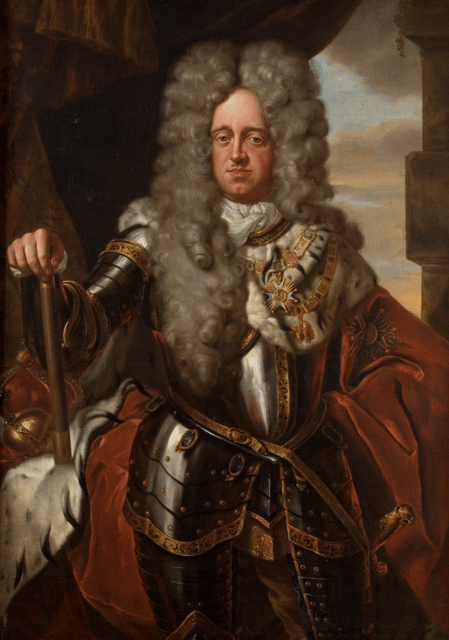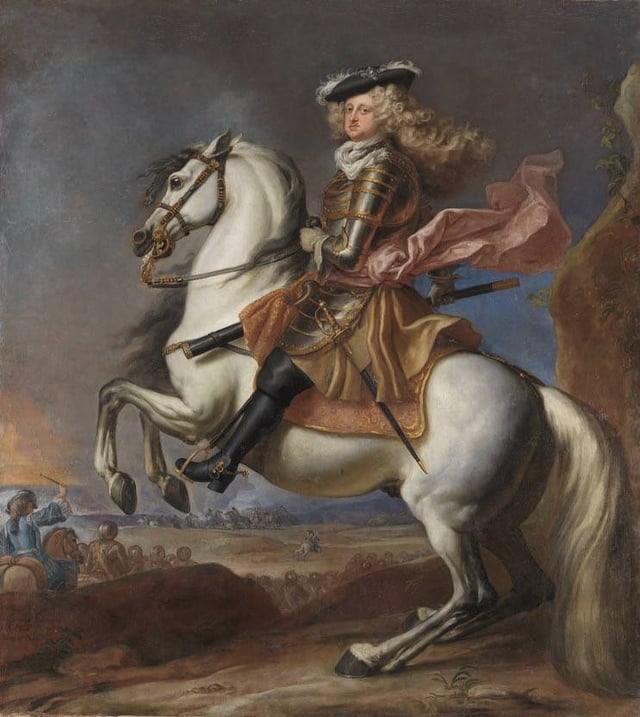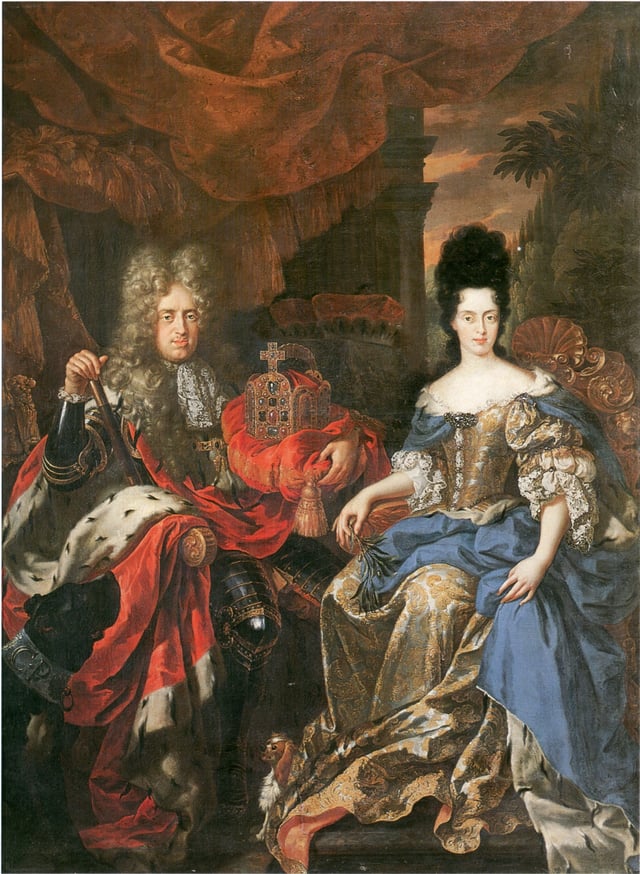Johann Wilhelm, Elector Palatine

Johann Wilhelm, Elector Palatine

| Johann Wilhelm II | |
|---|---|
| Elector Palatine | |
| Reign | 2 September 1690 – 8 June 1716 |
| Predecessor | Philip William |
| Successor | Charles III Philip |
| Born | 19 April 1658 Düsseldorf |
| Died | 8 June 1716 (aged 58) Düsseldorf |
| Burial | St. Andreas, Düsseldorf |
| Spouse | Maria Anna Josepha of Austria Anna Maria Luisa de' Medici |
| House | House of Wittelsbach |
| Father | Philip William, Elector Palatine |
| Mother | Elisabeth Amalia of Hesse-Darmstadt |
Johann Wilhelm II, Elector Palatine ("Jan Wellem" in Low German, English: "John William"; 19 April 1658 – 8 June 1716) of the Wittelsbach dynasty was Elector Palatine (1690–1716), Duke of Neuburg (1690–1716), Duke of Jülich and Berg (1679–1716), and Duke of Upper Palatinate and Cham (1707–1714). From 1697 onwards Johann Wilhelm was also Count of Megen.
| Johann Wilhelm II | |
|---|---|
| Elector Palatine | |
| Reign | 2 September 1690 – 8 June 1716 |
| Predecessor | Philip William |
| Successor | Charles III Philip |
| Born | 19 April 1658 Düsseldorf |
| Died | 8 June 1716 (aged 58) Düsseldorf |
| Burial | St. Andreas, Düsseldorf |
| Spouse | Maria Anna Josepha of Austria Anna Maria Luisa de' Medici |
| House | House of Wittelsbach |
| Father | Philip William, Elector Palatine |
| Mother | Elisabeth Amalia of Hesse-Darmstadt |
Biography

Equestrian portrait of Johann Wilhelm by Anthoni Schoonjans, 1702

Double portrait of Johann Wilhelm von der Pfalz and Anna Maria Luisa de' Medici
He was the son of Count Palatine Philip William of Neuburg and Elisabeth Amalie of Hesse-Darmstadt and was born in Düsseldorf, where he resided, rather than in Heidelberg, which had been largely destroyed by French troops during the Nine Years' War. He was educated by the Jesuits and in 1674 he made a grand tour to Italy.
He married Archduchess Maria Anna of Austria in 1678. She was a daughter of Ferdinand III, Holy Roman Emperor and his third wife Eleanor of Mantua. After her death in 1689, he married Anna Maria Luisa de' Medici, the daughter of Cosimo III de' Medici, Grand Duke of Tuscany. His brother was Franz Ludwig, Count Palatine of Neuburg, his sisters were married to Holy Roman Emperor Leopold I, Peter II of Portugal and Charles II of Spain.
His father ceded the duchies of Jülich and Berg to him in 1679, before he also succeeded him as Elector Palatine in 1690. In the Peace of Rijswijk (1697), he was restored to many of the possessions which had been taken by the French, with the provision that the Electorate of the Palatinate not revert to Protestantism. This provision did not make him popular in the Palatinate and with Protestants.
During the War of the Spanish succession Johann Wilhelm received also the Bavarian Upper Palatinate, which was returned to Bavaria in 1714. He died in Düsseldorf and was buried in the St. Andreas Church. Having no son, Johann Wilhelm was succeeded by his brother Charles III Philip, Elector Palatine.
Art collections
He was more popular in Jülich-Berg, where he erected impressive buildings such as the Schloss Bensberg and led a lavish court which gave work to many artists and artisans, including the court painters Johannes Spilberg, his daughter Adriana, her later husband Eglon van der Neer, Adriaen van der Werff, Jan Frans van Douven, Herman van der Mijn, Jan van Nickelen, his daughter Jacoba Maria van Nickelen, her husband Willem Troost, Anthoni Schoonjans, Rachel Ruysch, Godfried Schalcken and Jan Weenix with his daughter Maria Weenix.[1][2] His enormous collection of paintings by Rubens can still be seen in the Alte Pinakothek in Munich.
His widow Anna Maria Luisa was the last scion of the House of Medici. A patron of the arts, she bequeathed the Medici's large art collection, including the contents of the Uffizi, Palazzo Pitti and the Medicean villas, which she inherited upon her brother Gian Gastone's death in 1737, and her Palatine treasures to the Tuscan state, on the condition that no part of it could be removed from the capital Florence. Therefore, these treasures are still to be visited in Florence today.
In Düsseldorf, the Jan-Wellem Square is named after Johann Wilhelm.